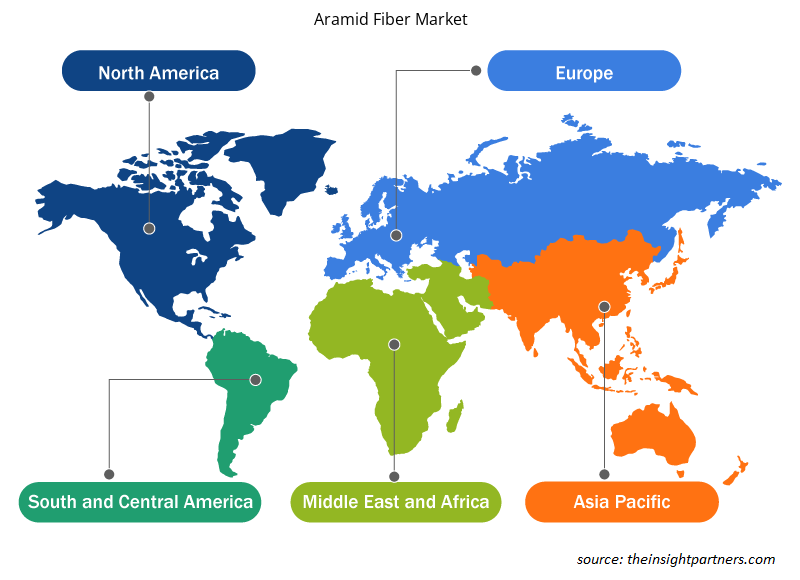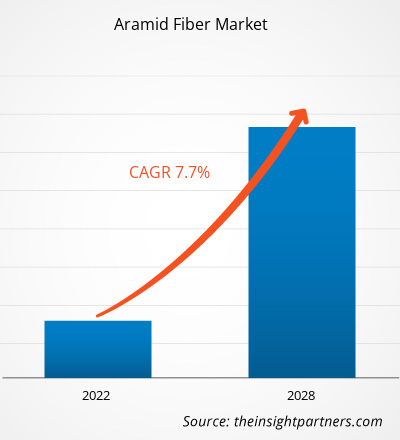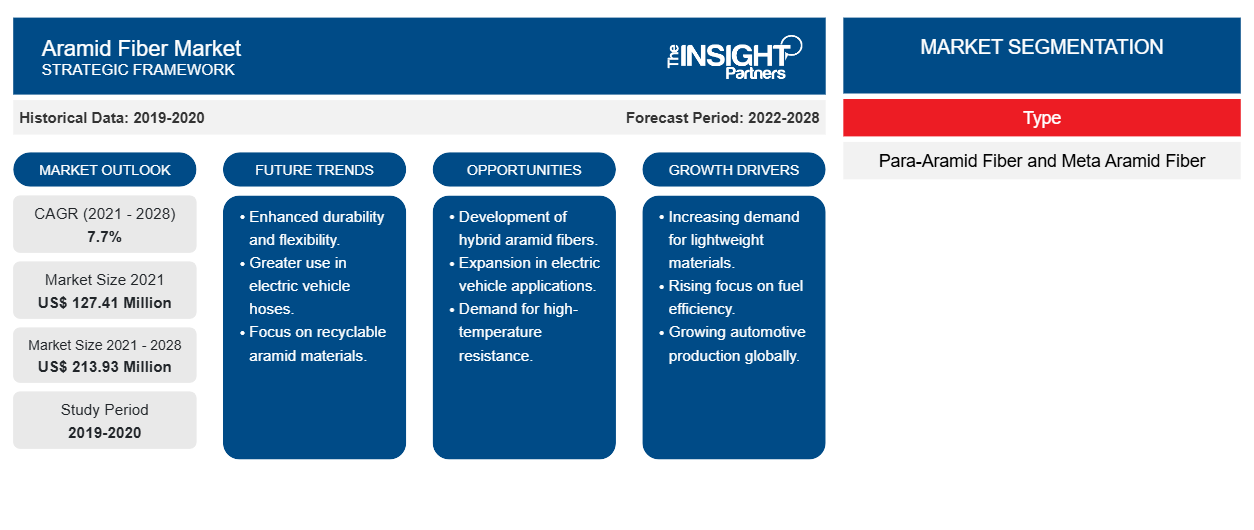Si prevede che il mercato delle fibre aramidiche per tubi flessibili per autoveicoli raggiungerà i 213,93 milioni di dollari entro il 2028, rispetto ai 127,41 milioni di dollari del 2021; si prevede una crescita a un CAGR del 7,7% dal 2021 al 2028.
Le fibre aramidiche sono fibre sintetiche ad alte prestazioni con molecole caratterizzate da catene polimeriche relativamente rigide. Queste molecole sono collegate tra loro da forti legami idrogeno che trasmettono in modo efficiente lo stress meccanico. Il termine "aramide" significa "poliammide aromatica". Le fibre aramidiche appaiono come filamenti giallo oro brillante. Queste fibre sono utilizzate per rinforzare pneumatici, componenti del gruppo propulsore, tubi flessibili del turbocompressore, pastiglie dei freni, cinghie, guarnizioni, frizioni, tessuti dei sedili, componenti elettronici, sensori dei sedili e materiali per motori ibridi.
Si prevede che il mercato delle fibre aramidiche per tubi flessibili per autoveicoli nell'area Asia-Pacifico crescerà al CAGR più rapido durante il periodo di previsione. Si prevede che il mercato regionale assisterà a una crescita notevole nel prossimo futuro a causa della rapida espansione dell'industria automobilistica, che spinge il fiorire dell'industria manifatturiera di componenti per auto, soprattutto in paesi come Cina, Corea del Sud e India. Con l'aumento della produzione di veicoli elettrici, aumenta anche il numero di parti e componenti nel veicolo, il che rafforzerà ulteriormente la crescita del mercato delle fibre aramidiche per tubi flessibili per autoveicoli nella regione.
Personalizza questo report in base alle tue esigenze
Riceverai la personalizzazione gratuita di qualsiasi report, comprese parti di questo report, o analisi a livello nazionale, pacchetto dati Excel, oltre a usufruire di grandi offerte e sconti per start-up e università
-
Scopri le principali tendenze di mercato in questo rapporto.Questo campione GRATUITO includerà analisi di dati che spaziano dalle tendenze di mercato alle stime e alle previsioni.
Impatto della pandemia di COVID-19 sul mercato delle fibre aramidiche per tubi flessibili per autoveicoli
La pandemia di COVID-19 ha avuto un impatto significativo sul mercato delle fibre aramidiche per i tubi flessibili per autoveicoli nel 2020. Durante la pandemia, le industrie automobilistiche hanno temporaneamente interrotto i loro processi di produzione, portando a una diminuzione della domanda di prodotti realizzati in fibre aramidiche. Inoltre, l'industria automobilistica globale ha assistito a un crollo di recente. Secondo l'OICA, nel 2020 sono stati prodotti circa 77,62 mila veicoli a livello globale, rispetto ai 92,18 mila veicoli del 2019, indicando un calo della produzione del 15,8%. Il calo può essere attribuito a una produzione inferiore nei principali hub automobilistici come Stati Uniti, Cina, Giappone e Germania, che hanno registrato rispettivamente un calo del 19%, 2%, 17% e 24% nel 2020 rispetto al 2019. Tuttavia, l'industria ha iniziato a guadagnare slancio dal quarto trimestre del 2020 e si prevede che assisterà a una crescita significativa nei prossimi anni a causa della crescente domanda di veicoli elettrici.aramid fiber market for automotive hoses in 2020. During the pandemic, the automotive industries temporarily discontinued their production processes, leading to a decrease in demand for products made up of aramid fibers. In addition, the global automotive industry has witnessed a downfall recently. According to the OICA, ~77.62 thousand vehicles were produced globally in 2020, compared to 92.18 thousand vehicles in 2019, indicating a 15.8% drop in production. The drop can be attributed to a lower output in major automobile hubs such as the US, China, Japan, and Germany, which experienced a 19%, 2%, 17%, and 24% decline, respectively, in 2020, compared to 2019. However, the industry has started to gain momentum since the Q4 of 2020 and is expected to witness significant growth in the coming years owing to the rising demand for electric vehicles.
Approfondimenti di mercato
Aumento della domanda di crescita del mercato dei carburanti per l'industria automobilistica
La fibra aramidica è un polimero artificiale appartenente alla classe delle fibre sintetiche resistenti e resistenti al calore. Offrono una buona resistenza all'abrasione e ai solventi organici e presentano un punto di fusione elevato, bassa conduttività e bassa infiammabilità. C'è stato un aumento nell'uso di fiber is a man-made polymer belonging to the class of strong synthetic and heat-resistant fibers. They provide good resistance to abrasion and organic solvents, and exhibit high melting point, low conductivity, and low flammability. There has been an increase in the use of fibre aramidiche fibers nell'industria automobilistica in applicazioni quali pneumatici, tubi flessibili del turbocompressore, componenti del gruppo propulsore, cinghie, pastiglie dei freni, guarnizioni, frizioni, tessuti dei sedili, componenti elettronici, sensori dei sedili e materiali per motori ibridi. Queste fibre vengono utilizzate per rinforzare i tubi flessibili della trasmissione, del radiatore e del turbocompressore. I tubi flessibili rinforzati con fibre aramidiche sono più resistenti e duraturi e possono resistere alle condizioni più difficili.powertrain components, belts, brake pads, gaskets, clutches, seat fabrics, electronics, seat sensors, and hybrid motor materials. These fibers are used to reinforce transmission, radiator, and turbocharger hoses. The hoses that are reinforced with aramid fibers are stronger and long-lasting and can withstand the toughest conditions.
La produzione di auto o veicoli coinvolge una serie di materiali, come ferro, alluminio, plastica, acciaio e vetro. Le fibre aramidiche sono ampiamente utilizzate come sostituti di alluminio e acciaio grazie alla loro leggerezza, elevata resistenza alla trazione e superiore resistenza alla corrosione. I produttori del settore automobilistico si sforzano costantemente di introdurre prodotti innovativi per rimanere competitivi nei mercati in cui operano. Gli aspetti di sicurezza, le eccellenti prestazioni e la necessità di sostenibilità spingono il settore automobilistico a sviluppare prodotti di alta qualità. Devono garantire ottime prestazioni dei tubi flessibili per autoveicoli indipendentemente dalle condizioni sempre più difficili. Ad esempio, i sistemi di tubi flessibili sotto il cofano devono resistere a condizioni operative sempre più difficili; di conseguenza, i filati di rinforzo dei tubi flessibili devono avere una resistenza superiore, nonché stabilità chimica, termica e dimensionale. Le fibre aramidiche aiutano a migliorare la sicurezza, le prestazioni e la durata dei componenti automobilistici, inclusi i tubi flessibili e le cinghie per autoveicoli. Inoltre, aiutano a prolungare la durata del prodotto, a migliorare le prestazioni del prodotto e così via.Aramid fibers are extensively used as a substitute for aluminum and steel due to their lightweight, high tensile strength, and superior corrosion resistance. Manufacturers in the automotive industry are continuously striving to introduce innovative products to stay competitive in the markets they serve. Safety aspects, excellent performance, and the need for sustainability, pressure the automotive industry to develop high-quality products. They need to ensure a fine performance of automotive hoses irrespective of increasingly difficult conditions. For example, under-hood hose systems must withstand increasingly harsh operating conditions; consequently, the hose reinforcing yarns must have superior strength, as well as chemical, thermal, and dimensional stability. Aramid fibers help improve the safety, performance, and durability of automotive components, including automotive hoses and automotive belts. In addition, they help extend product life, improve product performance, and so on.
Informazioni sul tipo di materiale
In base al tipo, il mercato delle fibre aramidiche per tubi flessibili per autoveicoli è diviso in fibre para-aramidiche e fibre meta-aramidiche. Il segmento para-aramidico registra un CAGR più elevato nel mercato nel periodo 2021-2028. Le para-aramidiche hanno un'elevata resistenza alla trazione (lo stress più elevato che un materiale può sopportare) e un comportamento del modulo (la tendenza di un materiale a deformarsi quando viene applicata una forza). Inoltre, le fibre para-aramidiche sono più rigide e hanno una maggiore tenacia e resistenza rispetto alle fibre meta-aramidiche. Tuttavia, sono chimicamente sensibili e acidi, alcali e candeggine indeboliscono la resistenza della poliammide para-aramidica. Alcuni esempi di fibre para-aramidiche sono Kevlar, Technora, Twaron e Herron. La domanda di fibre para-aramidiche è guidata dal loro crescente utilizzo in applicazioni di sicurezza e protezione. Vengono utilizzati in applicazioni critiche come indumenti protettivi, tra cui giubbotti antiproiettile, caschi e blindature per veicoli, grazie alla loro elevatissima resistenza e alla struttura molecolare rigida e altamente orientata.aramid fiber market for automotive hoses is bifurcated into para-aramid fiber and meta aramid fiber. The para-aramid segment is register a higher CAGR in the market during 2021–2028. Para-aramids have high tensile strength (the highest stress that a material can withstand) and modulus behavior (the tendency of a material to deform when force is applied). Further, para-aramid fibers are stiffer and have greater tenacity as well as strength than meta-aramid fibers. However, they are chemically sensitive, and acids, alkalis, and bleaches weaken the strength of para-aramid polyamide. A few of the examples of para-aramid fibers are Kevlar, Technora, Twaron, and Herron. The demand for para-aramid fibers is driven by their increasing use in security and safety applications. They are used in critical applications such as protective clothing, including bulletproof vests, helmets, and vehicle armor, due to their ultrahigh strength, and rigid and highly-oriented molecular structure.
Alcune delle aziende che operano nel mercato delle fibre aramidiche per i tubi flessibili per autoveicoli sonoaramid fiber market for automotive hoses are Contitech Ag, Dupont, Teijin Limited, Yokohama Rubber Co., Ltd., Schaeffler Ag, Bando Chemical Industries Ltd., Hutchinson Sa, Toyobo Co. Ltd., Aramid Hpm, LLC, Fiberline e Kolon Industries, Inc. Le aziende chiave implementano fusioni e acquisizioni, nonché strategie di ricerca e sviluppo per espandere la base clienti e ottenere una quota significativa nel mercato globale, il che consente loro di mantenere ulteriormente il proprio marchio a livello globale. Ag, Dupont, Teijin Limited, Yokohama Rubber Co., Ltd., Schaeffler Ag, Bando Chemical Industries Ltd., Hutchinson Sa, Toyobo Co. Ltd., Aramid Hpm, LLC, Fiberline, and Kolon Industries, Inc. The key companies implement the mergers and acquisitions, and research and development strategies to expand customer base and gain significant share in the global market, further allowing them to maintain their brand name globally.
Segnala i riflettori
- Tendenze industriali progressive nel mercato delle fibre aramidiche per tubi flessibili per autoveicoli per aiutare gli operatori a sviluppare strategie efficaci a lungo termine
- Strategie di crescita aziendale adottate dai mercati sviluppati e in via di sviluppo
- Analisi quantitativa del mercato delle fibre aramidiche per tubi flessibili per autoveicoli dal 2020 al 2028
- Stima della domanda globale di fibra aramidica per tubi flessibili per autoveicoli
- Analisi di Porter per illustrare l'efficacia degli acquirenti e dei fornitori che operano nel settore
- Sviluppi recenti per comprendere lo scenario competitivo del mercato
- Tendenze e prospettive di mercato, nonché fattori che guidano e frenano la crescita del mercato delle fibre aramidiche per tubi flessibili per autoveicoli
- Assistenza nel processo decisionale evidenziando le strategie di mercato che sostengono l'interesse commerciale, portando alla crescita del mercato
- La dimensione del mercato delle fibre aramidiche per i tubi flessibili per autoveicoli in vari nodi
- Panoramica dettagliata e segmentazione del mercato, nonché dinamiche del settore delle fibre aramidiche per tubi flessibili per autoveicoli
- Dimensioni del mercato delle fibre aramidiche per tubi flessibili per autoveicoli in varie regioni con promettenti opportunità di crescita
Approfondimenti regionali sul mercato delle fibre aramidiche
Le tendenze regionali e i fattori che influenzano il mercato delle fibre aramidiche durante il periodo di previsione sono stati ampiamente spiegati dagli analisti di Insight Partners. Questa sezione discute anche i segmenti e la geografia del mercato delle fibre aramidiche in Nord America, Europa, Asia Pacifico, Medio Oriente e Africa e America meridionale e centrale.

- Ottieni i dati specifici regionali per il mercato delle fibre aramidiche
Ambito del rapporto sul mercato delle fibre aramidiche
| Attributo del report | Dettagli |
|---|---|
| Dimensioni del mercato nel 2021 | 127,41 milioni di dollari USA |
| Dimensioni del mercato entro il 2028 | 213,93 milioni di dollari USA |
| CAGR globale (2021 - 2028) | 7,7% |
| Dati storici | 2019-2020 |
| Periodo di previsione | 2022-2028 |
| Segmenti coperti |
Per tipo
|
| Regioni e Paesi coperti |
America del Nord
|
| Leader di mercato e profili aziendali chiave |
|
Densità degli attori del mercato: comprendere il suo impatto sulle dinamiche aziendali
Il mercato delle fibre aramidiche sta crescendo rapidamente, spinto dalla crescente domanda degli utenti finali dovuta a fattori quali l'evoluzione delle preferenze dei consumatori, i progressi tecnologici e una maggiore consapevolezza dei vantaggi del prodotto. Con l'aumento della domanda, le aziende stanno ampliando le loro offerte, innovando per soddisfare le esigenze dei consumatori e capitalizzando sulle tendenze emergenti, il che alimenta ulteriormente la crescita del mercato.
La densità degli operatori di mercato si riferisce alla distribuzione di aziende o società che operano in un particolare mercato o settore. Indica quanti concorrenti (operatori di mercato) sono presenti in un dato spazio di mercato in relazione alle sue dimensioni o al valore di mercato totale.
Le principali aziende che operano nel mercato delle fibre aramidiche sono:
- ARAMIDE HPM, LLC
- AZIENDA DI GOMMA ARTEL
- AZIENDA DI PRODUZIONE DI CASTORI
- CONTINENTALE AG
- DUPONT DE NEMOURS, INC.
Disclaimer : le aziende elencate sopra non sono classificate secondo un ordine particolare.

- Ottieni una panoramica dei principali attori del mercato delle fibre aramidiche
Mercato delle fibre aramidiche per tubi flessibili per autoveicoli - per tipo
- Fibra para-aramide
- Fibra di meta-aramide
Profili aziendali
- Contitech Ag
- Dupont
- Teijin limitata
- Azienda Yokohama Rubber Co., Ltd.
- Schaeffler Ag
- Bando Chemical Industries Ltd.
- Hutchinson Sa
- Società anonima Toyobo Co. Ltd.
- Aramid Hpm, LLC
- Fibra di linea
- Analisi storica (2 anni), anno base, previsione (7 anni) con CAGR
- Analisi PEST e SWOT
- Valore/volume delle dimensioni del mercato - Globale, Regionale, Nazionale
- Industria e panorama competitivo
- Set di dati Excel
Report recenti
Testimonianze
Motivo dell'acquisto
- Processo decisionale informato
- Comprensione delle dinamiche di mercato
- Analisi competitiva
- Analisi dei clienti
- Previsioni di mercato
- Mitigazione del rischio
- Pianificazione strategica
- Giustificazione degli investimenti
- Identificazione dei mercati emergenti
- Miglioramento delle strategie di marketing
- Aumento dell'efficienza operativa
- Allineamento alle tendenze normative























 Ottieni un campione gratuito per - Mercato delle fibre aramidiche
Ottieni un campione gratuito per - Mercato delle fibre aramidiche